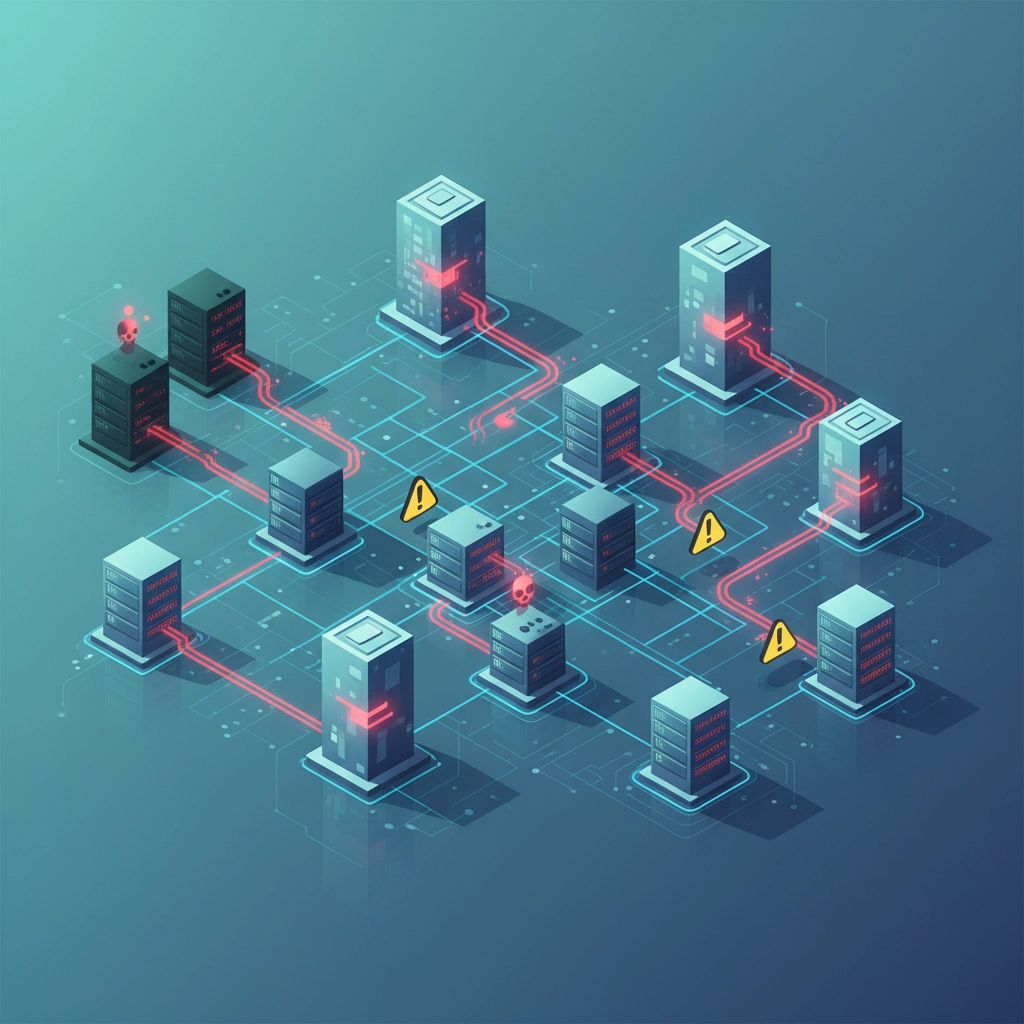Your accounting software just pushed an update. Your employees clicked "install now" like they always do. Within hours, hackers had access to every client file, every bank account, and every piece of sensitive data in your business. The kicker? Your accounting software vendor had no idea they were delivering malware directly to thousands of their customers.
Welcome to 2025, where your most trusted business partners might be your biggest security threat.
The New Battlefield: Supply Chain vs Traditional Attacks
Traditional breaches are what most business owners picture when they think "cyber attack" – hackers breaking down your digital front door through phishing emails, malware, or exploiting unpatched systems. Think of it like a burglar picking your lock and ransacking your office.
Supply chain attacks are far more insidious. Hackers compromise a vendor, software provider, or service you trust, then use that relationship to slip malicious code directly into your systems. It's like the locksmith who installed your security system secretly gave copies of your keys to criminals.
The numbers tell a brutal story: supply chain attacks have surged 40% in just two years, and they now account for nearly 20% of all breaches in 2025. But here's the real gut punch – they're causing exponentially more damage than traditional attacks.

Real-World Carnage: When Trusted Partners Turn Toxic
Supply Chain Attack Example: In early 2025, the 3CX phone system software update became a weapon. Hackers had compromised 3CX's development environment and poisoned routine software updates. Within days, over 600,000 organizations worldwide were compromised through software they trusted completely. Small businesses using 3CX for their communications suddenly found their entire networks under attacker control – not because they did anything wrong, but because they trusted their phone system provider.
Traditional Breach Example: A mid-sized marketing firm fell victim to a spear-phishing campaign targeting their finance department. Attackers gained access to email systems and eventually moved laterally through the network. Total damage: $150,000 in remediation costs and 3 days of downtime. Painful, but contained to one organization.
The difference? The supply chain attack simultaneously compromised hundreds of thousands of businesses. The traditional breach affected one company.
The Devastating Math: Why Supply Chain Attacks Win the Destruction Derby
Let's break down why supply chain attacks are obliterating businesses at a scale traditional breaches never could:
Detection Time: Supply chain attacks take an average of 26 days longer to detect than traditional breaches. When malicious code arrives through trusted software updates, your security tools assume it's legitimate. You're basically welcoming the attackers in and offering them coffee.
Cost Impact: The average supply chain breach costs $4.91 million compared to traditional breaches. But that's just the direct victim. When you factor in the ripple effect across all affected organizations, the numbers become astronomical – $60 billion globally projected for 2025 alone.
Scale Factor: Traditional attacks target one organization at a time. Supply chain attacks hit hundreds or thousands simultaneously. It's the difference between a sniper and a nuclear bomb.

The Trust Paradox That's Killing Small Businesses
Here's the cruel irony: the more connected and efficient your business becomes, the more vulnerable you are to supply chain attacks. Every software-as-a-service tool, every cloud integration, every "convenient" third-party solution creates another potential attack vector.
Small businesses are particularly vulnerable because they:
- Rely heavily on third-party software and services
- Rarely have the resources to vet every vendor's security practices
- Trust their technology providers implicitly
- Lack dedicated security teams to monitor for supply chain compromises
According to recent data, 75% of organizations faced a software supply chain attack in the last 12 months. If you're running a small business and haven't been hit yet, you're either incredibly lucky or you haven't discovered the breach yet.
The AI Arms Race Making Everything Worse
Attackers aren't just getting more sophisticated – they're getting AI assistance. In 2025, threat actors are using artificial intelligence to rapidly identify vulnerabilities in complex supply chain networks and launch attacks at unprecedented scale.
Meanwhile, most small businesses are still using security approaches designed for the previous decade. It's like bringing a knife to a drone fight.

Battle-Tested Defense Strategies for Both Attack Types
For Traditional Breaches:
- Implement multi-factor authentication on all systems
- Keep software and systems patched and updated
- Train employees to recognize phishing attempts
- Use endpoint detection and response (EDR) tools
- Maintain offline backups
For Supply Chain Attacks (the harder challenge):
- Maintain an inventory of all third-party software and services
- Require security certifications from vendors
- Implement code signing verification for all software updates
- Use application whitelisting to control what software can run
- Monitor for unexpected network communications from trusted applications
- Establish incident response plans specifically for supply chain compromises
Universal Protection Strategies:
- Deploy zero-trust security architecture that assumes nothing is trustworthy
- Segment your network so compromised systems can't spread laterally
- Use behavioral analytics to detect unusual activity patterns
- Regularly audit and assess third-party vendor security practices
- Consider cyber insurance that specifically covers supply chain attacks

The Compliance Nightmare No One Talks About
Supply chain attacks create a legal and regulatory nightmare that traditional breaches rarely match. When your vendor gets compromised and your customer data gets stolen, who's liable? The answer is increasingly "everyone."
New regulations are holding businesses responsible for their vendors' security failures. The FTC Safeguards Rule, various state privacy laws, and industry-specific compliance requirements are all tightening the screws on supply chain security.
If you can't prove you did due diligence on your vendors' security practices, you could face regulatory penalties even though you weren't directly attacked.
The Verdict: Supply Chain Attacks Are the Clear Winner in Destruction
Supply chain attacks are unquestionably more destructive to businesses in 2025 than traditional breaches. The math is simple and brutal:
- Multiplier Effect: One attack compromises hundreds of organizations simultaneously
- Stealth Factor: 26 days longer detection time means deeper damage
- Cost Explosion: $4.91 million average cost vs. traditional breach costs
- Growth Trajectory: 40% surge while traditional attacks plateau
- Trust Exploitation: Bypasses security by weaponizing trusted relationships
Traditional breaches are like getting robbed. Supply chain attacks are like discovering your security company has been selling your protection schedules to burglars for months.
Your Move: Don't Wait for the Betrayal
The question isn't whether your business will face a cyber attack – it's whether you'll be ready for the attack that comes through your most trusted vendor.
Ready to protect your business from both traditional breaches and supply chain attacks? At B&R Computers, we specialize in helping small and mid-sized businesses build comprehensive security strategies that address both direct threats and vendor-related risks.
Contact us today for a free security assessment that covers your entire technology ecosystem – including those trusted partners who might unknowingly become tomorrow's attack vector. Because in 2025, your cybersecurity is only as strong as your weakest vendor.



































































